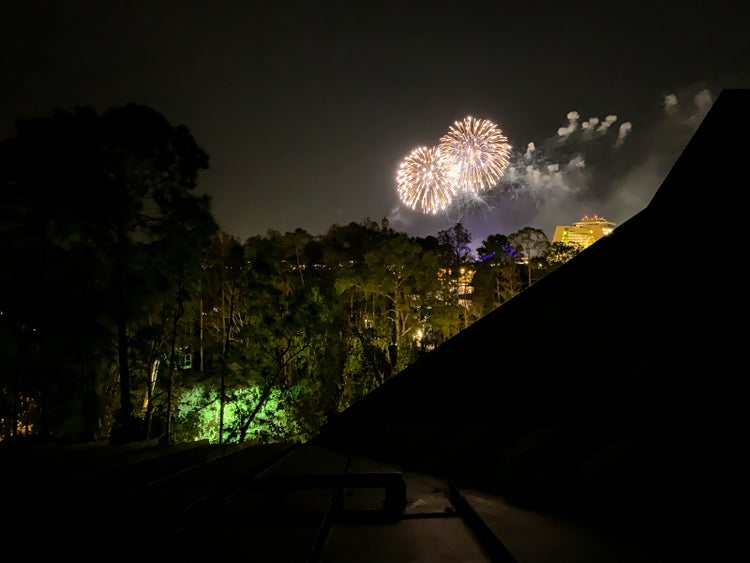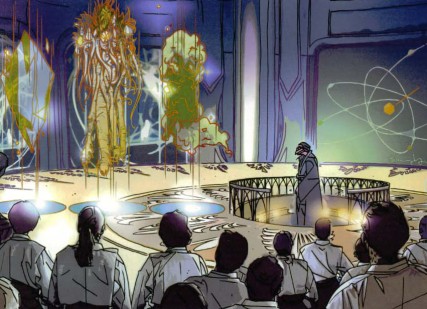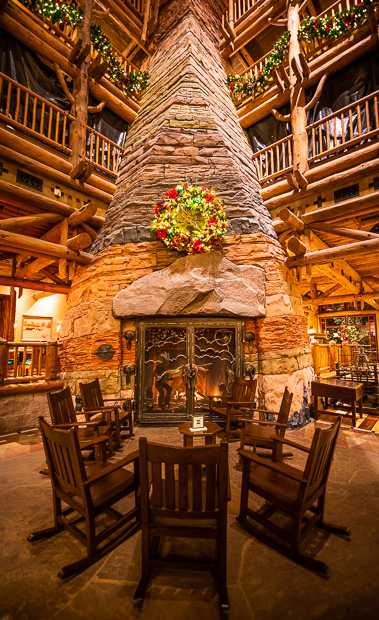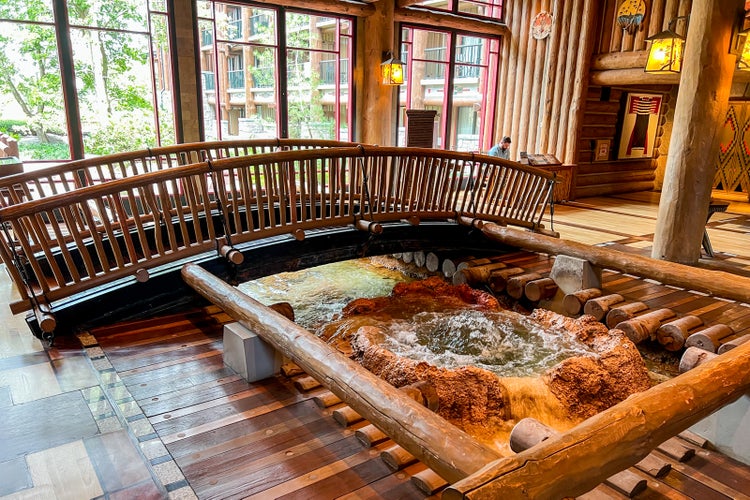He stood, so others might rise.

- Intent: To create the next level of Jedi Enclave located on Kashyykk.
- Image Credit: Here, Here, Here, Here, Here, Here, Here, and Here.
- Canon: Jedi Enclaves
- Permissions: N/A
- Links: N/A
- Structure Name: Shadow Temple
- Classification: Temple
- Location: Tree Kachirho, Tree Vikkilynn, Kachirho, Kashyykk
- Affiliation: Jakku Jedi Enclave, Kattaddan Jedi Enclave, Restored Silver Rest, Enasrrrrkw Jedi, New Jedi Order, Jedi
- Accessibility: The Shadow Temple "hides in plain sight" underneath the ruins of the old Temple and the ruined city of Kachirho. The outside of the Enclave acts as much of a reminder to locals of what was, but also a deterrent to bother to look around.
The inside of the facility is where the Enclave is home, but was destroyed previously, it is little more than ash and rotted materials. These tunnels and accessways are only made available through either specially grooved Wookiee claws (for the tribal elders aware of the Temple's location) and reaching out through the Force with the proper wording. Natural camouflage and architecture, as well as Force Sensitive cloacking techniques make up the majority of the concealment, the rest is early warning detection and shield generators. This combined with the "Shyyyo's Heart" tribe (referring to the Shyyyo bird of Kashyykk) members being the only ones outside of Jedi who know of the Enclave's existence make it an almost impossible find. If for some reason one is able to get past these points, Temple Guard (trained personally by Master Vanagor) and droids make up the checkpoints, everyone who enters is "checked in" so there is a constant awareness of who is there and who is not (or shouldn't be). - Description: The Shadow Temple was designed with immersion in mind, body, spirit and environment. The technology that encompasses the inner workings of the Enclave is state of the art, the outter Enclave is made of architecture that melds with the natural topography of the planet with natural colors and markings. Natural structures and artistry adourn the grounds, springs, waterfalls and glowing pools bring a beauty to the outside. This a sharp contrast to the inside which is very "functional" with cool colors, still matching the outter topography and environment, calm flowing lines, relaxed features, and a natural serenity. The difference on the inside is there is a level of technology that allows, operates, encourages and maintains the operations of learning, training and preparation, Overall, the facility is a natural wonder, but there is more than meets the eye, which is a loose interpretation of the Jedi themselves.
COMMON AREA/RESPITE DISTRICT
The Common Area is where Jedi in the middle of training, or simply relaxing, can walk among and around each other should they wish to. The natural contructions allow for easy "conversation starters". The common areas also increase security in being one of the "early warning detection" methods. These two areas were created for the Jedi to be reminded of Harmony within their environment and to enjoy the experience of their surroundings, not just be in them. While much of this area was built from reclaimed wood of the Wroshyr trees, flimsiplast and Duraplast pieces were strategically placed in order to not only create a smooth transition towards the inner side of the zone, but to structurally support it more efficiently. Aesthetically pleasing lights, lanterns and decorations add to the ambience of the area, and strategically placed seats encourage a more cozy atmosphere. While this is Temple is not a "retreat" by any means, there is a means and resource to be able to experience the side of a Jedi that one does not always get to access, relaxation. The one request is that any "Force" abilities are kept to a minimum here, and study encouraged.
The Respite District the rooms that live the walls of each level of the Common area not only allow for, but encourage mind nourishing rest. Noise cancelling walls give residents the peace and quiet they need, or the freedom to celebrate the night should they wish. This is where a Jedi can just be a sentient and be themselves without having to worry about social events or required appearances. While there are three separate types of eating establishments in this area (more on that in a moment) each set of quarters is equipped with a fully stocked kitchen as well as the acoutrements they need based on their personnel files. Computer stations with full time Holonet connections as well as comm-links and holovid players are equipped as well, allowing for personal time to be enjoyed by each patron if and when they choose to spend it in there. Unlike other Enclaves, access to the Respite District is not restricted to residents as the public does visit the Common areas and this zone is a part of that, but security measures are in place for those who do not.
PHYSICAL TRAINING

The Shadow Temple does discriminate, but not for any illegitimate reason. The use of these facilities and lands are under strict agreement with the "Shyyyo's Heart" tribe and require a natural security from the Jedi, not just for them, but for the natural serenity of the planet itself. Each session done in a controlled area that expands to the size of the needs of the instructor is patrolled on the perimeter by the Shyyyo's Heart tribe. One thing that the natural environment gives a Jedi is a chance to feel and experience the danger that they might out in the field and not simply do something "by the book". This zone is loosely based off of the 25 Chambers training module created by the last Jedi Master
Experienced Padawans and Knights will be challenged by the level of difficulty brought to each session, not only in the session itself but the height that they are at when done so. Fear leads to the Dark Side and experiencing a challenging session in this environment (especially over a sleeping Terentatek) will help you get over any fears quickly.
CLASSROOMS

The Jedi who attend the Shadow Temple are not here simply for a physical education. There is the mental side as well, Investigation is a heavy part of the Jedi who relied on their intuition and connection to the Force to perform detective work and prevent crimes, an extension of the Jedi Order's traditional role as guardians and peacekeepers. This while those following the path of the Shadow learn about stealth and infiltration (theory before practice)to work for the Council of First Knowledge. They are tasked with destroying anything connected to the Sith and their followers, and while normally are permitted to study and use Dark Side abilities that were not normal for Jedi Knights they must prove that they are ready to do so and not simply say so. These paths hav the strictest of oversight and Learners know this before going into it that they may be deemed "unfit" to follow this path at any time. While the reason being given may not be well understood, they are made to understand that it is necessary. The life of a Jedi Shadow is difficult and not all are capable of understanding or following it. This is not a negative reflection on those Jedi, just a statement on the type of Jedi needed for the path.
Shadows are not the only ones taught here, Guardians are as well. Not all of them though as there are specialized paths. Such as the "Exotic Weapons Specialist" or in some cases a "Weapon Master". Deciding to adopt a different weapon than that carried by other Jedi, Weapons Specialists sometimes work with tools other than a lightsaber to defeat their foes. A rarity in the Order; Weapons Specialists work with Double-Bladed Lightsaber, Lightsaber Pikes, flails, whips, and Blasters.
Setting aside their lightsabers, Weapon Masters would spend years of study, honing their skills in the art of their chosen weapon. Becoming highly skilled in their art, they are well respected within the Order and without. Mastering the use of either a Double-Bladed Lightsaber, lightsaber pike, Quarterstaff, San-Ni staff, whips, or flails, is all that needed to be done to be considered a Weapon Master by the Jedi High Council. Additionally, ranged weapons like blasters and the use of one's body as a weapon is sufficient to receive this recognition.
A Jedi Ace is a specialized path that could be taken by any Jedi Knight pursuant to becoming a Jedi Guardian. Each a member of the Jedi Starfighter Corps, aces combine their connection to the Force with their piloting skills to be able to perform almost impossible and daring maneuvers to down their enemies or avoid being downed themselves.
The Jedi Peacekeepers are specialists in the art of policing the galaxy and ensuring that laws are enforced along the Outer Rim. Probably the most recognized branch of the Guardian class, these individuals serve alongside Sector police and local militias to ensure peace was kept amongst the stars. The branch of Peacekeepers serving on Coruscant and various Enclaves are made up of the Temple Security Force, the protectors of the Jedi Enclaves and the greater Temple districts.
The Jedi Temple training ground outside could not always be used so there is an area just inside of the Shadow Temple exterior, near the base of the Temple's central spire, where grows an ancient gnarled tree with golden boughs grown from retrieved pieces of the tree from the old Jedi Temple on Coruscant some nine hundred years ago.The training ground is not like the grounds of old which was used for the training of all Jedi, including younglings. The training conducted here is more advanced and requires more conducive previous training. At its heart is a reflection ancient tree that is imbued with the powers of the Force, primarily healing others and the aura of calming.
The Jedi Temple Sparring Arena, also known as the Combat Training Chamber, was a large chamber located deep within the walls of the Coruscant Jedi Temple. While destroyed during the rise of the Galactic Empire, the Temple and the arena were reconstructed for use by the reformed Order. A recreated facsimile was built here in order to enable those who have taken to their training and ready for some level of trial.
A bowl-shaped chamber deep within the Temple, the vault is completely white, with white mats spread amongst the floor near the wall for spectators to sit and observe. The center or the chamber is used for combat and is typically kept bare, however, balance beams, swings, and wobble and foamsteel balls, along with other distractions, cand tend to be littered around the chamber.
From the upper level control booth, a Jedi or tech operator will often set the room to one of five settings. Changes in the room include fluctuating gravity, change in interior lighting, temperature manipulation, as well as more varied weather and other variables. The room is equipped with a safety shield that can catch any apprentices who lost balanced and fell from a dangerous height. A shield projector is located in the floor so that it could cover the entire chamber.
STUDY HALL

When most Learners think about the words "Study Hall" they think about booked and structured time in the Jedi Archives, or sitting on their own in some dank hall unable to converse with others as it breaks some sort of rule. The purpose behind this is to strengthen individual resourcefulness, self reliance and resolve, as well as decrease and elminate distractions. This method is prudent and effective and has been for thousands of years.
The Study Hall at the Shadow Temple was designed with conversation in mind, talking, chatting, debating. This method may slow the "Study" process, but enable and strengthens the "team" dynamic and advantages of working with others. This was Team based learning a structured form of small-group learning that emphasizes student preparation out of class and application of knowledge in class. This also works to increase retention as well with knowledge from different sources and perspectives.
While this is not technically "in" the Respite District, the close knit environment, the decor and design offers a warm and giving environment to allow for independent learning to be more relaxed and increased learning – with the quality of relationships improved, pupils are able to take greater risks with their learning, knowing that they have the support of the Instructor, or resident Master should anything go wrong.
While the physical side of a Jedi's training is based and focused on the outside, training and study on the theory and mental side needs to be this way to keep a balance in the mental state. Guardians and Shadows both need to focus on balance so as to reduce their chances of falling to the Dark Side. Thus the design, it will not completely eliminate the possibility of the worst happening, but it will help minimize it. Instruction could happen here from time to time, but those will be few and far between gauging both the censur and the traffic in and out of the facility.
STARPORT

The Shadow Temple was built with training at the forefront, so it may make one wonder why an actual Starport was buiilt. That being said, the combination of being underground and built within the nearby Wroshyr Tree proves to be an effective design. The landing bays and berths closer to the Temple are technically on the grounds of the Kachirho starport making it a good hiding place and reserved for those Jedi with their own ships. Ground crews work to maintain and secure the ships when not in use.
The training bays are home to the Jedi Ace training. Here is where Guardian Authority Ltd. donated and maintains a wide array of starships. These ships have been donated for defense as well as the advanced curriculum of the Jedi Ace. Not just learning how to fly, but advanced maneuvers, and tactics meshing with that of the Force to be able to increase one's skills is that of a Jedi Ace. Primarily there are starfighters but other classes of ships are housed in the berths as well. These ships are free to use and will be gifted upon program completion. Starships such as the "Jedi Defender"Class Light Corvette, and the "Centennial Osprey" Class Jedi Transport are able to teach Jedi control and calming methods.
As referenced though, the Starport houses Starfighters primarily, different types depending on a Jedi's size and build. For those who are able to wait for custom models to be built there is the "Big Grumpy" Class Jedi Interceptor, there is the minimallist "Ataru" Class Jedi Interceptor. For those who are more advanced in more of a combat role, the "Soresu" Class Heavy Jedi Fighter, and "Djem So" Class Jedi Starfighter both provide more advanced capabilities. Of course, there is the iconic model made just for the Jedi in the Jedi X-wing. These courses are not simply "Sign up for a free ship" these vessels must be earned as they will represent what you will be specialized in for the future. That is not to say that there will not be a possibility of completing this curriculum. This new rebuild is more difficult to have a fully active Starport with ships coming and going as repidly as before, but they have found a way with the majority of the Temple inside the tree and underground.
ARMORY
Like the armory that existed within the Jedi Temple on the Galactic Republic capital planet of Coruscant in the waning years of the Old Jedi Order, the Shadow Temple has continued this. Within the armory is the Black Vault, where the storage for Sith weapons and artifacts will be kept. The outter section of the armory will be staffed with training and protocol droids as well as parts and accessories for weapons such as Lightsabers, Light Whips, Light Shotos, Double-Bladed Lightsabers, Lightsaber Pikes, Flails,
Quarterstaffs, San-Ni staffs, Long-Handle LIghtsabers, and Blasters. The purpose of all of these parts and pieces to levels that one might wonder to be a bit "excessive" is that it is better to have and "not need" than need and "not have" true that it is a part of a Padawan Learner's path to obtain their own pieces and parts, but this is not an average Temple.
Like the Starport, the Armory is not merely "come get some free gear". One must be signed up for the currirulum to learn the ways of a Temple Guard, or a Weapon Master to have access to these pieces for more than that of a single class at a time. Jedi by creed are not thieves, so there is no sense of suspicion or treatment to that extent of someone inside of the facility, but there is still the protocols to keep out those who might have "grabby hands" that are unaffilliated.
GATHERING FOYER

The Gathering Foyer is not to be confused with The Gathering which is a rite of passage of the Jedi Order meant as a lesson to teach Jedi Initiates how to overcome their personal fears or failings and to find a kyber crystal attuned to their Force presence in the Crystal Caves of Ilum(or a planet conducive to teaching this). Upon retrieving the crystal, the youngling can begin the process of constructing his or her lightsaber, under the guidance of Professor Huyang. Huyang is of course no lonbger available, but there are several qualified individuals in replacement.
The Gathering Foyer is designed much like the old Great Hall of the Jedi Temple and is a vast chamber located on the first level of the Shadow Temple. A place of gathering for the Jedi Order, the foyer is lined with many tiers of balconies where Jedi Masters and Knights can be seated. Used for various purposes, the Hall serves as the location of the funerals of great Jedi Masters. Directly beyond the main entrance hall, the Great Hall leads to the sacred spire at the center of the structure.
The Foyer shares design specs with the Common Areas and is lined with massive pillars and grand statues to go with the relaxed decor.
More than merely Meditation rooms (though Jedi can meditate in these areas should they wish to, that is what the area had been built for the Foyer is there, much like the Study Hall, to foster relationships and ease the communal effort that the Temple itself tries to create. This added to the much needed, but least thought about aspect of increasing security. After all, if those who instruct, work and attend this Temple, are aware of who else is here, they will be aware of those who are not supposed to be.
Jedi can often be seen discussing theory, methods, and various stories having learned, as well as general conversation and friendships being formed.
The Room of a Thousand Fountains was a large greenhouse located in the First Knowledge Quarter at the base of the Jedi Temple on Coruscant. Containing waterfalls and huge amounts of flora, meditative areas, pottery, and stone walkways, the chamber served as a meditative retreat for the members of the Jedi Order while staying in the Temple. Though it was destroyed in 19 BBY, the chamber was rebuilt in the new Jedi Temple circa 35 ABY and is often a mainstay to this very day of newer temples. The Shadow Temple is no different, housing one that is just outside of the Gathering Foyer where Jedi can sit, meditate and just enjoy their surroundings in rare moments of calm.
SECURITY - High

The Checkpoint is similar to that of the old Coruscant Jedi Temple. Trained Temple Guard (personally trained by Guardsmen on loan from the Silver Rest whose Guard were trained by Master Vanagor himself) line the perimeter both in uniform and in secret. They are there at the necessity for early warning systems detecting potential issues that are identified and assessed by the Guards themselves.
Jedi are not the only ones providing security as Wookiees provide security as well as local liaisons to those who may not be privy to what might be happening Graduated Jedi Aces, and Jedi Ace Instructors patrol the skies as Weapon Masters and Shadows work throughout the area in secret to keep the security at the level of protection they need it to be without taking away from the local feel and relaxed atmosphere that they want it to be. Encrypted lines of code are sent ahead of time to enable a sort of "list" on who is to arrive and who is not. There is a whitlelist to those who need to check in first and that is relegated to specific Masters and Knights involved in maintaining the Temple. If those elements fail, the biots (courtesy of Master
The only "Obvious" security droids are the Temple Gonki, who are meant to look silly and cute, but that distraction is to let them hide in plain site as well.
HISTORICAL INFORMATION
Some years ago when the original Silver Rest was destroyed by Laertia Io,
The building of the Sanctuary on Naboo, the Vonnuvi Enclave, and the building of the Enclave on Selvaris, while all commendable and furthering the expansion of the education of the Light do not house much anything different from the Prosperity, or the Temple of Coruscant. This is not a negative reflection on those facilities in any way shape or form, but to Vanagor, there needed to be a place that trained on specifics. A place condusive to shadows, a place where physical abilities took priority. This brought about the creation of the Shadow Temple, where Knights come to learn skills to assist them on their specific paths. While all Jedi are welcome to visit (provided checking in first), Padawans can only attend sessions who are close to beginning their Jedi Trials. The training regimen was designed to be more difficult and not all can handle the rigors without the prior experience.
The Shadow Temple was laid to waste when the Mandalorian Neo-Crusaders attacked and razed much of the planet. When they fell apart, there was a plan to rebuild, but the Black Sun moved in before that could come to fruition. Caltin would unfortunately not live long enough to see his desire to rebuild come to fruition, but Connel did.













